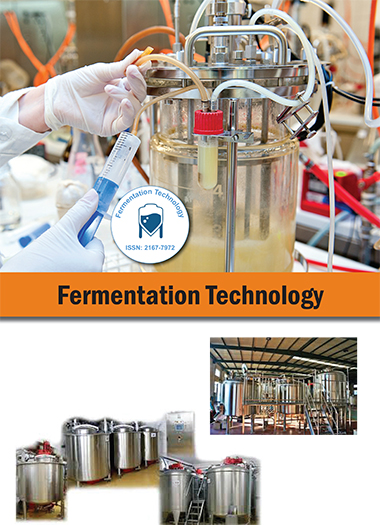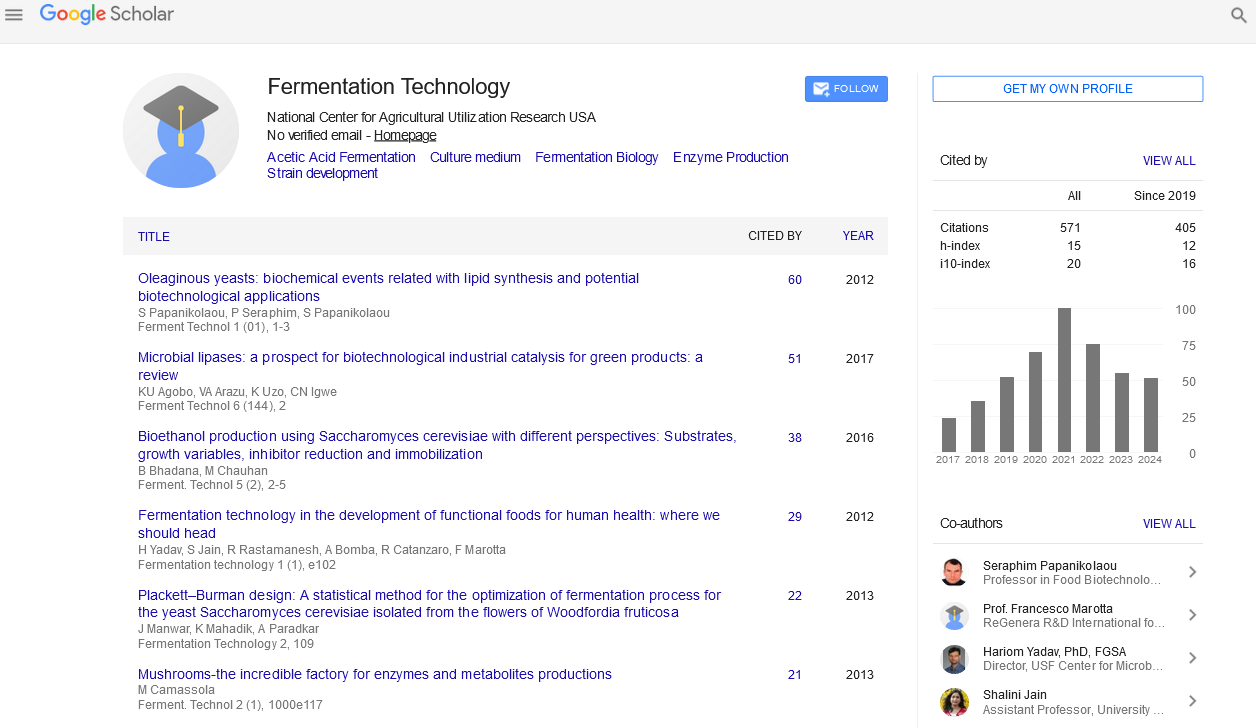Indexed In
- Open J Gate
- Genamics JournalSeek
- Access to Global Online Research in Agriculture (AGORA)
- RefSeek
- Hamdard University
- EBSCO A-Z
- OCLC- WorldCat
- Publons
Useful Links
Share This Page
Journal Flyer

Open Access Journals
- Agri and Aquaculture
- Biochemistry
- Bioinformatics & Systems Biology
- Business & Management
- Chemistry
- Clinical Sciences
- Engineering
- Food & Nutrition
- General Science
- Genetics & Molecular Biology
- Immunology & Microbiology
- Medical Sciences
- Neuroscience & Psychology
- Nursing & Health Care
- Pharmaceutical Sciences
Abstract
Improvement of Saccharification and Fermentation by Removal of Endogenous Chemicals from Pretreated Lignocellulosic Biomass (1). Effect of Ion-Exchange Resin Treatment
Tamotsu Hoshino, Masaharu Tsuji, Yuka Yajima, Kazuaki Yoshimune and Akinori Matsushika
The effects of removal of enzyme inhibitors on saccharification of lignocellulosic biomass and fermentation of their hydrolysate were examined with the aim of improving bioethanol production. Hydrothermal-mechanochemical treated woody powders lost their cell structures and lignin was widely and randomly distributed in treated woody powders. Enzymatic reaction resulted in the formation of many cracks and pores on the woody powder surface, and these cavities extended to the interior of woody powders. The concentrations of 3 kinds of phenolic enzyme inhibitors (gallic, tannic and trimesic acids) in the supernatant of the reaction mixture gradually increased during the enzymatic hydrolysis. Cracks and pores of hydrolyzed woody powders were probably routes of inhibitor release to the reaction mixture. Enzymatic saccharification was improved 1.4-fold by ion-exchange resin treatment after 24 hours of hydrolysis, and inhibition of cellulase activity was decreased by 60-95% compared to the control. Ethanol yield was improved 2.2-fold and lactic acid by 1.3-fold compared to corresponding yields using normal hydrolysates.

